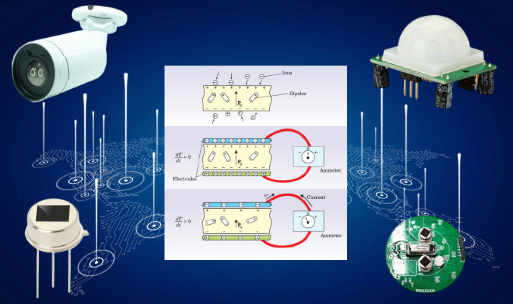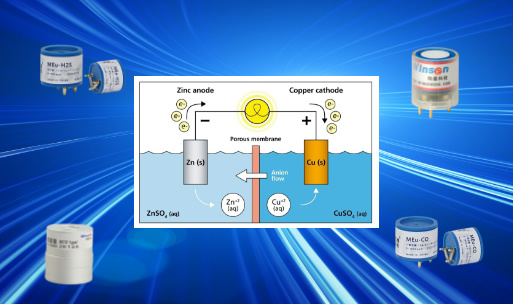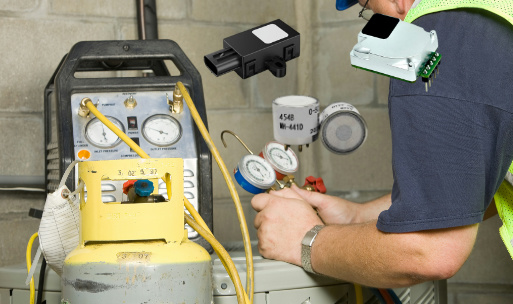What is TDLAS: A Comprehensive Guide to Tunable Diode Laser Absorption Spectroscopy
Tunable Diode Laser Absorption Spectroscopy (TDLAS) is a powerful analytical technique widely used for detecting and measuring gas concentrations. This method employs tunable diode lasers to probe specific absorption lines of gas molecules, providing highly sensitive and selective measurements. TDLAS has found applications in various fields, including environmental monitoring, industrial process control, medical diagnostics, and scientific research. This comprehensive guide explores the principles, components, applications, and advantages of TDLAS, offering a detailed understanding of its significance and utility.
Introduction to TDLAS
Principles of TDLAS
TDLAS is based on the absorption of laser light by gas molecules. When a tunable diode laser emits light at a specific wavelength that corresponds to an absorption line of a gas molecule, the gas absorbs a portion of the light. By tuning the laser across the absorption line and measuring the intensity of the transmitted light, the concentration of the gas can be determined. The Beer-Lambert law describes the relationship between the absorbance and the concentration of the absorbing species:

where:
- ( A ) is the absorbance,
- ( I0) is the initial light intensity,
- ( I ) is the transmitted light intensity,
- ( ε ) is the molar absorptivity,
- ( c ) is the concentration of the gas,
- ( L ) is the path length.
Components of TDLAS
TDLAS systems typically consist of the following key components:
- 1. Tunable Diode Laser: The core component that provides the tunable light source. It can emit light at specific wavelengths corresponding to the absorption lines of target gas molecules.
- 2. Optical System: Includes mirrors, lenses, and optical fibers to direct the laser beam through the sample gas.
- 3. Gas Cell: A chamber where the gas sample is contained for analysis. The laser beam passes through the gas cell.
- 4. Detector: Measures the intensity of the transmitted laser light after it has passed through the gas sample.
- 5. Data Acquisition and Processing System: Collects and analyzes the data to determine the gas concentration based on the absorption spectra.
Advantages of TDLAS
TDLAS offers several advantages over traditional gas detection methods:
- High Sensitivity: Capable of detecting gas concentrations at parts-per-million (ppm) or even parts-per-billion (ppb) levels.
- Selectivity: Highly selective for specific gas molecules due to the precise tuning of the laser to specific absorption lines.
- Fast Response: Provides real-time measurements with rapid response times.
- Non-invasive: Non-contact measurement method that does not interfere with the sample.
- Wide Dynamic Range: Capable of measuring a broad range of concentrations.
Applications of TDLAS
Environmental Monitoring
TDLAS is extensively used in environmental monitoring to detect and measure trace gases in the atmosphere. Key applications include:
- Air Quality Monitoring: Measuring pollutants such as nitrogen oxides (NOx), sulfur dioxide (SO2), carbon monoxide (CO), and ozone (O3) to assess air quality and comply with environmental regulations.
- Greenhouse Gas Monitoring: Detecting greenhouse gases such as carbon dioxide (CO2), methane (CH4), and nitrous oxide (N2O) to study climate change and monitor emissions.
Industrial Process Control
In industrial settings, TDLAS is employed for process control and safety monitoring:
- Combustion Control: Monitoring gases such as oxygen (O2), CO, and CO2 in combustion processes to optimize efficiency and reduce emissions.
- Leak Detection: Identifying leaks of hazardous gases like ammonia (NH3) and hydrogen sulfide (H2S) in chemical plants and refineries.
- Semiconductor Manufacturing: Measuring gas purity and detecting contaminants in semiconductor fabrication processes.
Medical Diagnostics
TDLAS has potential applications in medical diagnostics due to its sensitivity and selectivity:
- Breath Analysis: Non-invasive detection of biomarkers in exhaled breath for diagnosing diseases such as asthma, chronic obstructive pulmonary disease (COPD), and metabolic disorders.
- Anesthesia Monitoring: Measuring anesthetic gas concentrations during surgical procedures to ensure patient safety.
Scientific Research
Researchers use TDLAS for various scientific studies:
- Atmospheric Research: Studying atmospheric composition and dynamics by measuring trace gases and their variations.
- Fundamental Physics: Investigating molecular spectra and gas-phase reactions by analyzing high-resolution absorption spectra.
Summary Table: Uses of TDLAS
| Application Area | Specific Use | Benefits |
| Environmental Monitoring | Air Quality Monitoring | Real-time data, regulatory compliance |
| Greenhouse Gas Monitoring | Climate change studies, emission tracking | |
| Industrial Process Control | Combustion Control | Efficiency optimization, emission reduction |
| Leak Detection | Safety, prevention of hazardous gas leaks | |
| Semiconductor Manufacturing | Gas purity, contamination detection | |
| Medical Diagnostics | Breath Analysis | Non-invasive disease diagnosis |
| Anesthesia Monitoring | Patient safety during surgery | |
| Scientific Research | Atmospheric Research | Understanding atmospheric composition |
| Fundamental Physics | High-resolution molecular spectra analysis |
With its numerous advantages and wide-ranging applications, TDLAS continues to be a critical tool in modern analytical science, providing precise and reliable gas measurements essential for various industries and research fields.
Technical Aspects of TDLAS
Laser Tuning and Wavelength Selection
The ability to tune the diode laser to specific wavelengths is crucial for TDLAS. Diode lasers can be precisely tuned by adjusting the injection current and temperature. The selection of the appropriate wavelength depends on the absorption characteristics of the target gas.
Line Broadening Mechanisms
The absorption lines of gas molecules are influenced by several broadening mechanisms:
- Doppler Broadening: Caused by the thermal motion of gas molecules, resulting in a Gaussian line shape.
- Pressure Broadening: Caused by collisions between gas molecules, resulting in a Lorentzian line shape.
- Instrumental Broadening: Due to the finite resolution of the spectrometer or optical system.
Understanding these mechanisms is essential for accurate interpretation of absorption spectra and concentration measurements.
Calibration and Validation
Accurate calibration of TDLAS systems is necessary to ensure reliable measurements. Calibration involves using gas samples with known concentrations to establish a relationship between absorbance and concentration. Regular validation against standard references or alternative measurement techniques is also important.
Noise and Interference
TDLAS measurements can be affected by noise and interference from various sources:
- Laser Noise: Intensity fluctuations and frequency noise of the laser can affect measurement accuracy.
- Background Absorption: Absorption by other gases or impurities in the sample can interfere with the target gas measurement.
- Optical Interference: Reflections, scattering, and other optical effects can introduce noise into the detected signal.
Advanced signal processing techniques, such as wavelength modulation spectroscopy (WMS) and second harmonic detection, are often employed to enhance signal-to-noise ratio and reduce interference.
Future Trends and Developments
Miniaturization and Portability
Advances in laser technology and microelectronics are driving the development of miniaturized and portable TDLAS systems. These compact devices can be used in field applications for environmental monitoring, industrial inspections, and healthcare.
Multi-Component Detection
New TDLAS systems are being designed to detect multiple gas components simultaneously. By using multiple lasers or broadband tunable lasers, these systems can provide comprehensive gas analysis, enhancing their utility in complex environments.
Integration with IoT and Data Analytics
Integration of TDLAS with the Internet of Things (IoT) and advanced data analytics is opening new possibilities for remote monitoring and real-time data analysis. Smart TDLAS sensors connected to cloud platforms can provide continuous monitoring and predictive maintenance in industrial settings.
Enhanced Sensitivity and Selectivity
Ongoing research aims to enhance the sensitivity and selectivity of TDLAS by developing new laser sources, improving optical components, and refining signal processing algorithms. These advancements will enable detection of even lower concentrations of gases and better discrimination between similar molecules.
Conclusion
Tunable Diode Laser Absorption Spectroscopy (TDLAS) is a highly effective technique for gas detection and measurement. Its principles of operation, involving the absorption of laser light by gas molecules, allow for highly sensitive and selective analysis. TDLAS has found widespread applications in environmental monitoring, industrial process control, medical diagnostics, and scientific research, demonstrating its versatility and significance. With ongoing advancements in technology and increasing integration with modern data systems, TDLAS is poised to play an even more critical role in addressing future challenges in gas sensing and analysis.







